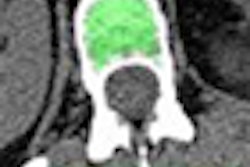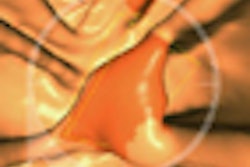Dear CT Insider,
Managing patients with kidney stones would be a lot easier if physicians knew precisely what kind of stones they were dealing with. They'd know after a quick CT scan, for example, whether lithotripsy was a viable option or more invasive measures were needed.
Prospects for noninvasively determining stone composition have recently gotten a boost from dual-source CT (DSCT), which studies show can reliably distinguish uric acid from nonuric acid stones.
This month, researchers from the Mayo Clinic in Rochester, MN, raised the bar again with their use of special beam filtering combined with DSCT. How high? According to results unveiled at the 2009 RSNA meeting, the use of dual-energy scanning combined with beam filtering and special software can reliably distinguish as many as five different stone types noninvasively. Learn more about the "rainbow" of distinctive stone types in this issue's Insider Exclusive.
Meanwhile, passive screening for osteoporosis is high on others' wish lists for the new decade, in which preventive care is expected to take center stage in efforts to both prevent morbidity and save money. Researchers from the U.S. National Institutes of Health in Bethesda, MD, have taken a step toward this goal with the development of an automated quantitative CT (QCT) bone densitometry technique.
Their method can use data from any abdominal CT scan -- for example, virtual colonoscopy -- to assess midvertebral bone density automatically and without the need for hands-on intervention, phantom studies, or additional radiation, for that matter. Get the rest of the story by clicking here.
CT has also moved into traditional cardiac MRI turf in important ways over the past decade -- for example, in assessing myocardial viability. Researchers from Germany now believe they can use the modality to evaluate myocardial edema as well. Find out more by clicking here.
In the lungs, a new study from Boston has found that radiologists may not always follow Fleischner guidelines for lung nodule management. And a startup company from Northern California hopes to make virtual bronchoscopy the next big automated evaluation technique.
But enough happy talk. Judging from several articles that have appeared in prestigious peer-reviewed journals this year, the cumulative effect of CT's more than 60 million scans a year is deadly -- never mind the diagnostic benefits.
Earlier this month, for example, two studies published in the Archives of Internal Medicine found higher-than-expected radiation dose in clinical CT studies, resulting in increased lifetime potential cancer risks.
Then there's the case of Jacoby Roth, who was 23 months old when he received a massive radiation overdose in 2008; the technologist operating the scanner recently testified that she didn't know the toddler had received 151 scans over the course of an hour. In yet another CT scandal, new cases of patients who were overexposed during perfusion CT scans of the head continue to be discovered.
For all the news that matters in CT, we invite you to scroll through the stories below -- and stay tuned to your CT Digital Community throughout the New Year.




















